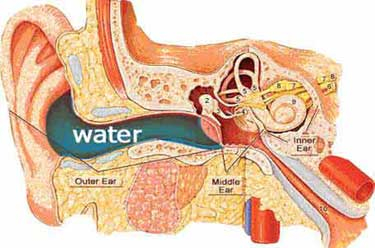Quiz Questions for Family: A Guide to Creating Engaging and Memorable Quizzes
Family quizzes are a fantastic way to spend quality time together while testing your knowledge and having some fun. Whether you’re preparing for a special occasion or simply looking for a way to engage your family, creating a well-designed quiz can make all the difference.
This comprehensive guide will provide you with everything you need to know about crafting engaging and memorable quiz questions for your family. From designing questions that cater to different age groups and knowledge levels to selecting appropriate topics and organizing content effectively, we’ll cover all the essential aspects of quiz creation.
Quiz Design Considerations
Creating engaging and challenging quiz questions requires careful consideration. Factors such as age group and knowledge level should be taken into account.
For younger audiences, questions should be straightforward and easy to understand. As knowledge levels increase, questions can become more complex and require critical thinking.
Variety
Incorporate a variety of question types to keep the quiz interesting. This could include multiple choice, true or false, short answer, and open-ended questions.
Clarity
Questions should be clear and concise, avoiding ambiguous or confusing language.
Balance
Strive for a balance between easy, medium, and difficult questions to cater to a range of abilities.
Relevance
Questions should be relevant to the topic being tested and aligned with the learning objectives.
Fairness
Ensure that questions are fair and not biased towards any particular group or perspective.
Question Types and Formats
Question formats can influence the difficulty, accessibility, and fairness of a quiz. Different types of questions can cater to diverse cognitive abilities and knowledge levels.
The most common question formats include multiple choice, true/false, and open-ended questions. Each format has its advantages and disadvantages:
Multiple Choice
- Advantages: Easy to grade, objective, allows for a wide range of question types, reduces guessing.
- Disadvantages: Can be limited in scope, may not assess higher-order thinking skills, can be biased if options are not carefully crafted.
True/False
- Advantages: Easy to grade, objective, can cover a lot of content in a short amount of time.
- Disadvantages: Can be difficult to write good true/false questions, may encourage guessing, can be biased if statements are not carefully crafted.
Open-Ended
- Advantages: Allows for more in-depth responses, assesses higher-order thinking skills, can be used to assess writing ability.
- Disadvantages: Difficult to grade, subjective, time-consuming to answer, can be difficult to write good open-ended questions.
Topic Selection and Research
Picking topics for family quizzes demands attention to age, interests, and knowledge levels. Select themes that spark curiosity and generate discussions. Explore diverse categories like history, science, pop culture, and current events to cater to various family members’ interests.
Conduct thorough research to ensure questions are accurate and up-to-date. Utilize credible sources like encyclopedias, reputable websites, and subject matter experts to verify information. This ensures the quiz is not only entertaining but also educational and informative.
Tips for Topic Selection
- Gauge the family’s knowledge levels and interests.
- Consider a mix of topics to engage everyone.
- Choose themes that allow for discussions and sharing of perspectives.
Strategies for Research
- Consult reputable sources like encyclopedias and academic journals.
- Verify information with multiple sources to ensure accuracy.
- Seek guidance from subject matter experts for specialized topics.
Content Organization and Presentation

Organizing quiz questions into logical categories or themes makes the quiz easier to navigate and understand. For example, you could create categories such as “History,” “Science,” “Geography,” and “Pop Culture.” Within each category, you could further organize questions into subcategories, such as “Ancient History,” “Modern History,” “Biology,” “Chemistry,” “Physical Geography,” and “Human Geography.”
Effective presentation techniques can make your quiz more visually appealing and easier to read. For example, you could use tables or bullet points to list questions and answers. You could also use different colors or fonts to highlight important information.
Scoring and Evaluation
Scoring quizzes can be done in various ways. One common method is a point system, where each question is assigned a specific number of points. Participants earn points for correct answers, and the total number of points accumulated determines their score. Another method is weighted averages, where questions are assigned different weights based on their difficulty or importance. This allows for more nuanced scoring, as questions with higher weights contribute more to the overall score.
Providing Constructive Feedback
Providing constructive feedback to participants is crucial for their learning and improvement. Feedback should be specific, actionable, and supportive. It should focus on highlighting strengths and areas for improvement, rather than simply providing a grade or score. For example, instead of saying “You got 80% on the quiz,” a more constructive feedback would be “You did well on the questions related to topic X, but you could improve your understanding of topic Y by reviewing the provided resources.” This type of feedback helps participants identify areas where they need to focus their efforts.
Fun and Engaging Elements
Make quizzes a blast for families by injecting humor, using visual aids, and incorporating interactive elements.
Laughter lightens the mood and makes learning more enjoyable. Sprinkle in witty questions, funny anecdotes, or clever wordplay to keep everyone entertained.
Visual Aids
Visuals grab attention and enhance comprehension. Include images, charts, graphs, or short videos to illustrate concepts or provide context. This makes the quiz more engaging and accessible for all.
Interactive Elements
Interactive elements turn quizzes into games. Consider using online quiz platforms that allow for real-time competition, team play, or leaderboards. These features foster friendly competition and add an extra layer of excitement.
Helpful Answers
What are some tips for creating engaging quiz questions?
To create engaging quiz questions, consider using a variety of question types, incorporating humor or visual aids, and making the questions relevant to your family’s interests.
How can I design questions for different age groups and knowledge levels?
When designing questions for different age groups and knowledge levels, consider the cognitive abilities and interests of your audience. Use simpler language and concepts for younger children and gradually increase the difficulty for older participants.
Where can I find reliable sources for quiz questions?
There are numerous online resources and books available that provide a wide range of quiz questions on various topics. Additionally, you can also consult with experts in specific fields to ensure the accuracy and relevance of your questions.
How do I organize quiz questions effectively?
To organize quiz questions effectively, group them into logical categories or themes. Use tables or bullet points to present the questions clearly and make it easy for participants to follow.
What are some ways to make quizzes more enjoyable for families?
To make quizzes more enjoyable for families, incorporate elements of fun and interactivity. Use humor, visual aids, or even interactive games to keep participants engaged and entertained.





